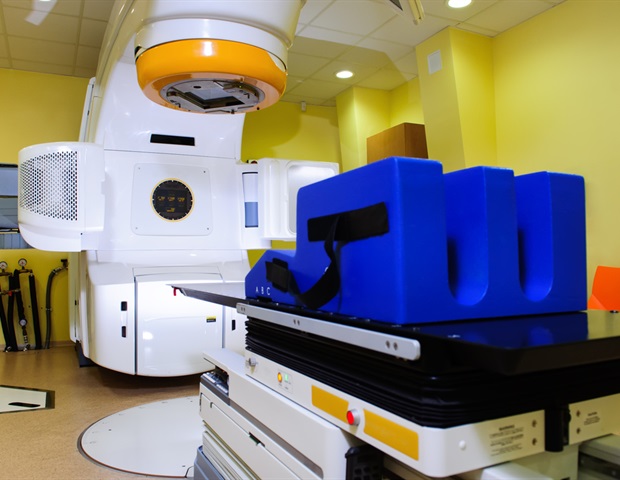In a recent study posted to the medRxiv* preprint server, a team of researchers characterized the expression of type-1 and type-2 interferons (IFN-1 and IFN-2), interferon-stimulated genes (ISGs), and nuclear factor kappa B (NF-κB) in the upper respiratory tracts of patients with mild and severe coronavirus disease 2019 (COVID-19), to understand innate immune responses to severe acute respiratory syndrome coronavirus 2 (SARS-CoV-2) infections.

Background
The severe clinical outcomes of COVID-19 are a cumulative effect of SARS-CoV-2 infections and the body’s immune response against the virus, resulting in cellular damage and systemic dysfunction.
Early immune responses to SARS-CoV-2 infection and replication in the type-2 pneumocytes present on the alveoli of upper and lower respiratory tracts consist of secretion of IFN-1 such as interferon alpha-2 (IFNα2) and interferon beta-1 (IFNβ1), and IFN-2 such as interferon-gamma (IFNγ). Interferons also induce gene expression of ISGs, which produces a local antiviral state.
Additionally, during SARS-CoV-2 infections, NF-κB mediates the expression of pro-inflammatory chemokines and cytokines and activates the adaptive and innate immune cells. However, the pro-inflammatory responses activated by NF-κB can also cause tissue and organ damage and dysfunction.
Studies suggest that interferon responses during COVID-19 vary with severity and across anatomical compartments. Understanding the differences in innate immune responses during SARS-CoV-2 infections could help develop therapies that mitigate the organ damage and dysfunction caused by the viral infection and the subsequent pro-inflammatory response.
About the study
In the present study, blood and oro- and nasopharyngeal swabs were collected from hospitalized (severe) and outpatient (mild) cases at the United States National Institute of Health. De-identified blood and respiratory samples from healthy individuals were used as control.
Total ribonucleic acid (RNA) was extracted from the swab and blood samples. Droplet digital polymerase chain reaction (ddPCR) was used to amplify SARS-CoV-2 RNA from the swab sample RNA extracts. The RNA extracted from the blood samples was used for a NanoString assay to determine the expression of specific genes. Geometric mean expressions of 28 ISGs and 11 NF-κB targets were determined to calculate the 28-gene type-1 ISG and 11-gene NF-κB scores, respectively.
An expression vector containing a stabilized pre-fusion SARS-CoV-2 spike protein trimer was used to transfect FreeStyle293F cells. The spike protein was then acquired from the cell supernatant using size-exclusion chromatography and used to characterize antibody responses through surface plasmon resonance.
Fluorescence reduction neutralization assays were conducted to detect the neutralizing antibodies in the serum samples. The half-maximal inhibitory concentration (IC50) was determined for each serum sample through logistical regression of each dilution series.
Results
The results reported significantly higher ISG and NF-κB responses in the upper respiratory tracts of mild COVID-19 patients as compared to patients with severe COVID-19. The gene expression analysis of the ISGs indicated that mild COVID-19 patients had increased expression of 13 genes in the upper respiratory tract compared to severe COVID-19 cases.
A large part of the upregulated ISGs had antiviral or regulatory functions, such as C-X-C motif chemokine ligand 10 (CXCL10), which recruits T and natural killer cells presenting C-X-C chemokine receptor type 3 (CXCR3) and coordinates the adaptive immune responses in the early stages of the infection. Decreased CXCL10 expression in the upper respiratory tracts of severe COVID-19 patients decreases the early immune responses, inhibiting the clearance of virus-infected cells from the upper respiratory tracts.
Furthermore, mild COVID-19 cases exhibited significantly elevated IFNα2 and IFNγ in the upper respiratory tracts than severe COVID-19 patients did, suggesting an early antiviral response that prevented the spread of SARS-CoV-2 to the lower respiratory tract. In contrast, in severe COVID-19 cases, the decreased IFNα2 and IFNγ responses resulted in increased viral load in the lower respiratory tract in 10 days.
Additionally, increased expression of the IFNβ1 gene was observed in severe COVID-19 patients, followed by increased expression of cyclic guanosine monophosphate (GMP)– Adenosine monophosphate (AMP) synthase (cGAS) and stimulator of interferon genes (STING), which has been linked to endothelial dysfunction. The lower respiratory tract samples of severe COVID-19 patients also exhibited increased NF-κB responses compared to the upper respiratory tract and blood samples during peak infection.
Conclusions
Overall, the results indicated impaired interferon responses in the upper respiratory tract during the early stages of SARS-CoV-2 infections, followed by strong pro-inflammatory responses such as increased NF-κB responses in the lower respiratory tract during the peak stages of the infection, contribute to the pathogenesis of severe COVID-19.
*Important notice
medRxiv publishes preliminary scientific reports that are not peer-reviewed and, therefore, should not be regarded as conclusive, guide clinical practice/health-related behavior, or treated as established information.







